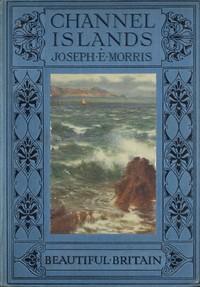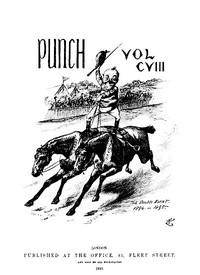|
|
Read this ebook for free! No credit card needed, absolutely nothing to pay.Words: 16499 in 6 pages
This is an ebook sharing website. You can read the uploaded ebooks for free here. No credit cards needed, nothing to pay. If you want to own a digital copy of the ebook, or want to read offline with your favorite ebook-reader, then you can choose to buy and download the ebook. INDEX 63 FACING PAGE THE CHANNEL ISLANDS JERSEY Elle est pour nous la France, et, dans son lit des fleurs, Elle en a le sourire et quelquefois les pleurs. Mont Orgueil, where we stand, is not a bad starting-point from which to commence our exploration of Jersey. Happy, indeed, the visitor who arrives at this little port from France--and the steamer comes from Carteret in little more than an hour. Most English tourists, on the other hand, make Jersey first at St. Helier, which happens to be a town of considerable dulness, and compares very badly with St. Peter Port, in Guernsey. Mont Orgueil, however, may be reached at once from St. Helier by one of the two strange little railways that traverse the south coast of the island. The traveller should quit the train at the previous station of Gorey Village, and walk thence across Gorey Common to the Castle. This last, placed bravely on its boss of rugged rock, grows more and more impressive the nearer we approach it. Superb in situation, and unusually picturesque, this "hill of pride" has yet few features of real architectural interest. Parts of it date from about the end of the twelfth century, and the archaeologist, of course, will gather "sermons" from every stone of it. But the ordinary sight-seer will be best delighted with the picturesque approach up long flights of steps past successive gateways; with the beautiful views of land and sea to be got from its towers; and, best of all, by the general view of the castle itself, dominating the little harbour that crouches below its walls. The structure is built of a soft-red granite, that is very pleasant to look on, and not least so in spring, when its broken walls are beautifully variegated with a thousand brilliantly orange wallflowers. One is reminded for a moment of the famous verse-- A rose-red city, half as old as time-- The poet then goes on to tell us how this stronghold is sometimes assaulted--but assaulted to no purpose--by sea and wind, "two boystrous foes": Less than a decade later and the walls of Mont Orgueil witnessed still blacker tragedy. The quarrel of the Bandinels and the Carterets is an ugly page of history that almost recalls in its unrelenting ferocity some of the worst clan "vendettas" of the Highlands. The trouble began, apparently, with the action of Sir Philip de Carteret, when Governor of Jersey, in attempting to deprive David Bandinel--the writer does not know the rights and wrongs of the quarrel--of part of his tithes as Dean of the island. Shortly after this the Civil War began in England, and the Channel Islands were immediately plunged into internecine strife. Philip de Carteret was leader of the Royalists, while Bandinel espoused the cause of the Parliament. The latter at first was triumphant, and Carteret and his wife, Elizabeth, were respectively besieged by the Parliamentary troops, the one in Elizabeth Castle, and the other in Mont Orgueil. Carteret was not quite sixty years old, but the severities of the siege were too great for him. There were wrongs, no doubt, on both sides; but the Puritans seem certainly to have acted on occasion with a surly lack of generosity that goes far to atone for the brutal persecution by the Royalist party of a man like Prynne. In 1644, when Colonel Morris was besieged in Pontefract, we read in the diary of Nathan Drake that "the enemy basely stayed all wine from coming to the Castle for serving of the Communion upon Easter Day, although Forbus had graunted p'tection for the same, and one Browne of Wakefield said if it was for our damnation we should have it, but not for our Solvation." Similarly, in Jersey, the Parliamentary Committee, of whom Dean Bandinel was one, refused the dying Sir Philip the last consolations of religion, and even the presence of his wife. This, too, after an appeal so piteous as might well have drawn iron tears down Pluto's cheek, And made Hell grant what Love did seek. Presently the "jade Fortune" changed her favours, and the island was recovered for the King by Sir George Carteret, nephew and son-in-law to its former Governor. Dean Bandinel and his son James, the Rector of St. Mary's, were immediately clapped into prison in Mont Orgueil Castle, in the same cell that had formerly been occupied by Prynne. It does not appear that they were treated harshly, but Sir George was a man of cruel severity, and it may well be that they dreaded his further resentment. Anyhow, father and son resolved on a romantic escape. At about three o'clock in the morning, on the stormy night of February 10, 1644, they attempted to lower themselves from the window of their cell by a rope made of knotted napkins, sheets, and pieces of cord. "It is improbable that they had reconnoitred this place in the daytime," says Durell, "for had they been aware of the great elevation, they would never have made the attempt, as long as they were in their senses." Durell wrote in 1837, when the Tour de Mont was in existence for the whole of its height. This is said to have been 200 feet high, and the place of imprisonment of the Bandinels was immediately under its battlements. The building was supposed to be dangerous, and is now pulled down to its basement. Anyhow, when James Bandinel came to the bottom of the rope--he was the first to venture on the perilous descent--he found it was much too short. He allowed himself to drop on the rocks below, and was seriously hurt by the fall. His father, still less fortunate, was only halfway down, when the flimsy rope parted in two. He was thus dashed to the earth from a much greater height than his son, and was found lying there next morning in a dying condition. The son, after wrapping his insensible old father in his cloak, had attempted to make good his own escape. He was caught, however, a few days later, and conducted back in triumph to his cell. That same day the gates of Mont Orgueil had been opened to allow his father's body to be taken to the grave. David Bandinel was buried in St. Martin's Churchyard, two miles to the north-west of Mont Orgueil by the Faldouet road. I have searched for his grave on the east side of the churchyard, but there seems now to be no memorial, and the hawthorn that once marked it has vanished. It is said, however, to be in close proximity to the tombstones of Lucy and Mary Roche Jackson. His wife and son were afterwards laid by his side. Most of the interest of Jersey, however, except its fields of giant cabbage-stalks, and its green lanes of quaint little pollarded trees, will probably be found on the sea-coast, or near it. Let us, from Mont Orgueil, set our faces to the west, calling, on our way towards modern St. Helier, at the two ancient parish churches of Grouville and St. Clement's. In Grouville churchyard are buried seven soldiers who fell in a skirmish with a detachment of the French who had been left behind by Rullecourt, when he landed on this spot and advanced on St. Helier on January 6, 1781. Grouville church itself has little interest. Like other churches in the island, it is built of granite, and has windows with good Flamboyant tracery, except where this last has been cut away for the insertion of ugly "church-warden" sashes. It possesses, however, in the south wall of the south chapel, a very curious feature, the object of which is obscure. This is a niche on the level of the floor, with a late segmental head, and with what seems a broken cavity in the lower part at the back. I do not know whether this was once used as an oven for baking the sacramental wafer, such as those that are sometimes thought to have been found in the Surrey churches of Limpsfield, Nutfield, and Dunsfold. St. Clement's, a mile to the south, and lying off the direct road to St. Helier, should be visited for the sake of its ancient wall-paintings. One of these exhibits St. Michael; another St. Margaret of Antioch, emerging from the body of the dragon, who had vainly tried to swallow her; and another St. Barbara of Heliopolis, standing near her tower. Still more interesting are the scanty relics of the "Trois Vifs" and the "Trois Morts"--the legend of the three Kings, who, when hunting in the forest, were suddenly confronted by three open graves, or by three hideous skeletons. The classical instance of this morality is in the Campo Santo at Pisa; and there is another fine example, in a kind of vestry, on the south side of the great abbey-church of St. Riquier, near Abbeville. It was altogether rather a favourite subject with medieval, religious artists, not less than twenty-three examples being recorded in England by Mr. Keyser, as well as one at Ste. Marie du Chastel, in Guernsey. It must not be confounded with the parallel "Dance of Death," of which there are only five recorded instances, in addition to the one at old St. Paul's. There is still a grand example of this last on the back of the north choir stalls, in the strange old abbey-church of La Chaise Dieu, in Central France. Free books android app tbrJar TBR JAR Read Free books online gutenberg More posts by @FreeBooks
: Punch or the London Charivari January 12th 1895 by Various Burnand F C Francis Cowley Editor - English wit and humor Periodicals Punch@FreeBooksWed 07 Jun, 2023

: Punch or the London Charivari January 5th 1895 by Various Burnand F C Francis Cowley Editor - English wit and humor Periodicals Punch@FreeBooksWed 07 Jun, 2023
|
Terms of Use Stock Market News! © gutenberg.org.in2025 All Rights reserved.






